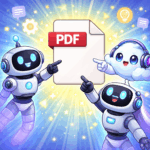PDF: A lifeblood technology of government
October 28, 2014


October 28, 2014

About PDF Association staff
 Unlike most businesses, government records-keepers are responsible for preserving documents for far longer periods than is typical in business, where retention periods rarely exceed 7 years.
Unlike most businesses, government records-keepers are responsible for preserving documents for far longer periods than is typical in business, where retention periods rarely exceed 7 years.
Unlike those of most businesses, many formal government documents must be public, accountable, and accessible to users with disabilities, while other publically-accessible documents must be redacted to remove sensitive information.
Unlike those of most businesses, formal documents in government must commonly adhere to exacting standards for reproduction and authenticity purposes. At the same time, government agencies must be ready to accept (and store, and retrieve) vast numbers of pages submitted by millions of taxpayers, lawyers, accountants, companies, regulators, etc.
Government organizations think about documents a little differently than corporations. They have to.
Government needs a record
For bureaucracies and democracies alike, a record of laws, regulations, court decisions, appointments, statements and the many other types of official documents require a fixed representation. Formal documents must have a predictable and authoritative look and feel, and provide consistent performance in all viewing and printing situations. Discounting raster images as insufficient, the only way to responsibly share fixed, formal documents is PDF.
Its not always easy to determine how PDF technology is best leveraged in non-commercial settings. The PDF Associations December 2014 PDF Day educational event in Washington DC is designed to help IT decision-makers address their future document technology projects with substantial and clear knowledge of what PDF can do for them.
Making the record
From the judiciary to the legislative branch, from the regulators office to defense procurement, government departments have special responsibilities to document their internal communications and records of actions taken. One understated but key quality of PDF is the fact that high-quality documents in this format can be made from almost any source document or system. Excel, CAD or web-browser, PDF takes it all. Its flexible, and for this and many other reasons, is ideally suited as an electronic document format of record.
PDF/A can make archival versions from scanned or born-digital documents, incoming email, high volume output, or anything that may be printed from a computer.
PDF/A is recommended for use with archival documents by NARAs new Transfer Guidance, and the Library of Congress.
Learn how to implement and address typical challenges in workflows based on PDF/A technology at PDF Day, December 10, 2014 in Washington DC.




